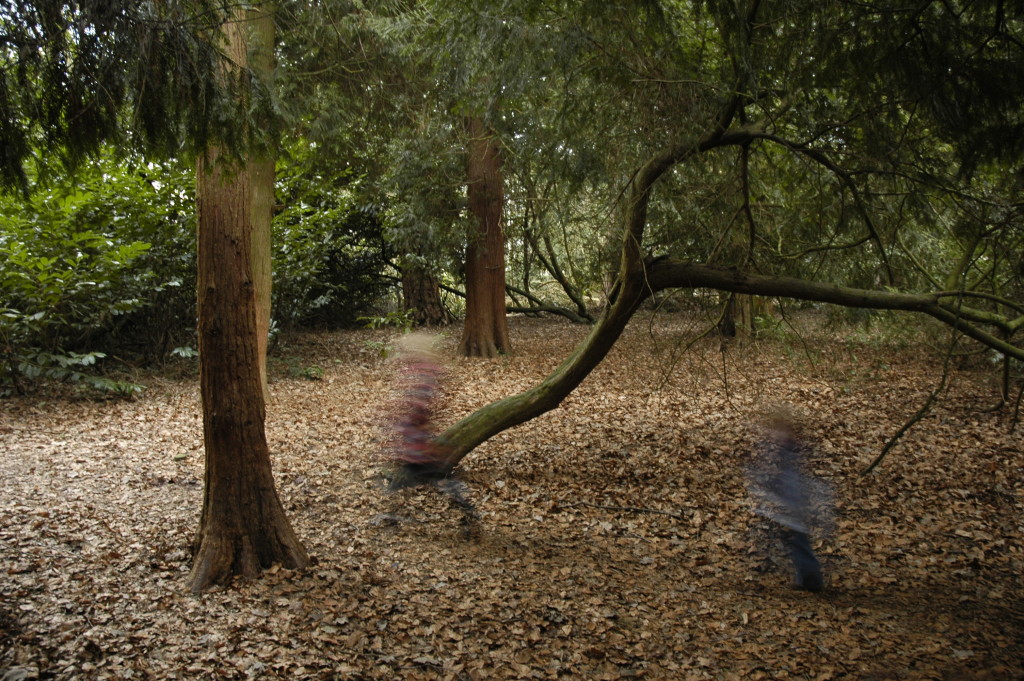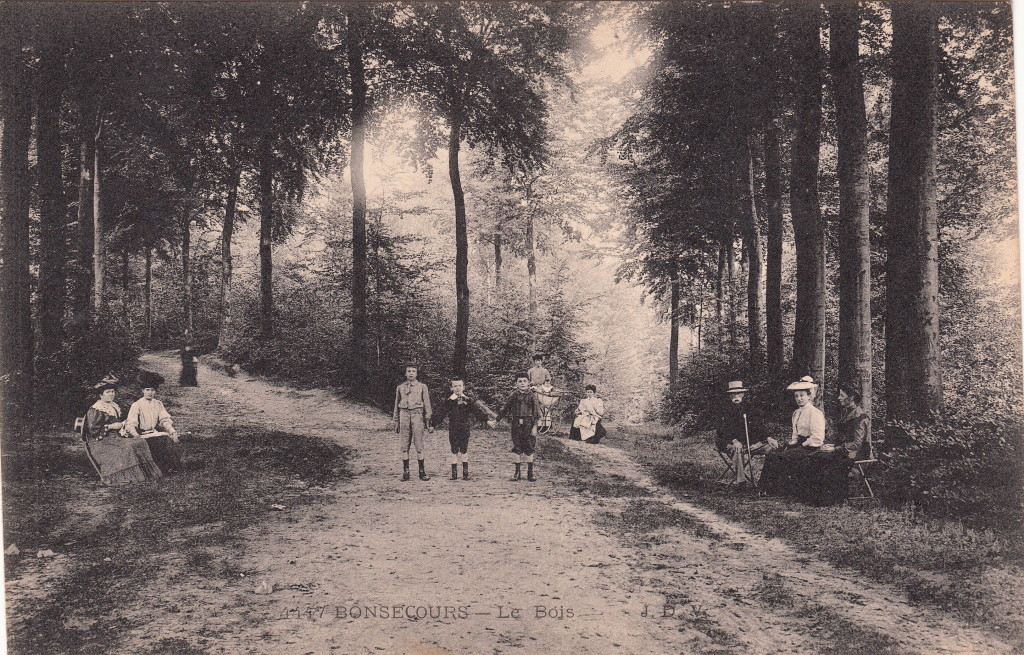
Image: Paul Stainthorp/Flickr
“Gross negligence,” Kitty Manseau calls it, “that year you let me stay out of school and go running around with Ava and Freddy all day long.” Now a psychologist and mother living in Park Slope, “the epicenter of helicopter parenting,” she cannot fathom what made her parents think it was okay to send her to “woods school.” Kitty is one of a quartet of narrators in Leah Hager Cohen’s fifth novel, No Book But the World, so named for a line from Rousseau’s educational treatise Émile: “Let there be no book but the world.” Written in circular flashbacks, the novel is about a pack of kids at Batter Hollow, an experimental school where they do little but play in the woods with no adult supervision—until one of them maybe (or maybe not) hurts another, who grows up to maybe (or maybe not) kill a boy. No Book But the World is a long, twisting meditation on childhood, loneliness and familial obligation.
At its heart, the novel is also a meditation on education—particularly, a child’s path out of the fog of innocence. In Cohen’s hands innocence is a fog, rather than a sparkling purity. For Ava Robbins, Kitty’s classmate and the daughter of the legendary school’s founder, that fog feels natural—not just of nature, but tolerably confusing. Even before her schooling begins, she is an autodidact who looks to picture books to understand “all that life had to offer: treachery, adventure, peril and bliss.” Her freedom expands as she steps from the reading couch and into the outdoors, where “there was even less structure, and no division at all between school and life.” It doesn’t occur to her that her father/teacher could be helping her to understand life’s mysteries instead of observing her and her brother “like a primatologist,” in Kitty’s words. Ava sees no harm in being left alone, believing her father’s story (and Rousseau’s): “the one we nursed on and cut our teeth on, that . . . gave shape to our days, our doings, our forays into the woods . . . Man is by nature good.”
Such freedom is more complicated for her little brother. Although he is never diagnosed, it is clear from an early age that Freddy is different. He bangs sticks and rocks and sometimes even his head to rhythms only he can hear. In some ways, he is his father’s perfect pupil: innocent and impulsive; but as an adult, he is a drifter. Good with his hands, Freddy moves from job to job occasionally befriending young boys whose wildness and isolation invokes his own. When one such boy disappears and is later found dead, the dots connect themselves.
This tragedy is the center around which the narrators spin, each trying to determine whether, and how, it could have been prevented. Cohen sets up a kind of round robin of testimony, and the effect is dizzying, rather than clarifying.

Image: Pelletthepoet/Flickr
Kitty, the only parent among the narrators, is black-and-white in her beliefs. She demands answers where Ava sees none. She blames Ava’s father for not getting Freddy diagnosed and for the unforgivable sin of regarding his children with professional remove. She blames her parents for sending her to “‘woods school,’ a term her parents used—not disparagingly, quite, but with a kind of detached amusement . . . as though the relationship they now bore with the people who had made that decision was one of fond bewilderment.” Her own path is an answer to the charge of parental neglect. Watching her young daughter tramp around Batter Hollow, where Ava now lives with Kitty’s brother Dennis, she “could not imagine letting this girl run free.”
For the other narrators, choices and their consequences are unavoidable traps. Freddy develops whatever measure of competency he possesses in the woods, unlike during his “brief, unwise enrollment in public school”—four miserable months spent mostly on the bench outside the principal’s office. Yet without formal schooling, he is denied the support of community. At the dead boy’s memorial service, a long parade of educators from Arthur L. Humphrey Middle School (“the middle school principal, the boy’s homeroom teacher, his gym teacher, his school bus driver”) speaks for him. It is a litany even Ava finds seductive—“They are calling him Jimmy, and he is becoming Jimmy in my mind, the pieces of a real boy converging, constructing someone solid and singular”—but who can speak Freddy into coherence? His parents are dead. Batter Hollow, where he “never didn’t fit when he was outdoors, never didn’t belong,” is closed. There is only Ava, who dreads and evades the burden of being responsible for him.
Freddy fares no better in prison than he did at Freyburg Primary. Human touch is forbidden, and Ava finds him on visiting day bouncing his legs and head nervously, unable to speak. She is at a loss to understand him, but the window Cohen grants us into Freddy’s mindset is heartbreaking. Freddy is too confounded to listen to his sister’s questions, stuck instead on a game of This is the church, this is the steeple. “He could get the steeple. He could get the doors. He opened the doors and it was empty inside, nothing but smooth palms. He couldn’t remember how to get the people.” It is the perfect metaphor for the way he has spent his life: at the threshold of a gathering place which is empty of people.
Cohen devotes little real estate to Ava’s husband, Dennis, positioning him primarily as another lens for viewing Ava. It’s the summer before his senior year at college when Ava, aged fourteen, finally catches his eye. Though she has followed Kitty to public school against her father’s wishes, her time in the woods has marked her as strange to her classmates, possessed of an “intractable otherness—a residue that clung like a stench wherever I went.” Dennis, however, sees her as “something unclassifiable: simply, consciously herself.”
Perhaps for similar reasons, Ava commands Cohen’s interest as well. Cohen opens the book with Ava’s fumbling attempts to grasp what her brother is capable of, and closes it with the limits of what a child should be allowed to learn. This isn’t Cohen’s educational treatise—her own Émile—and her tack isn’t polemical, but personal. She sets Ava at a writing desk with a notebook, awaiting visiting hours at the prison and waxing nostalgic on a childhood spent mostly outdoors. It’s a technique that calls on us to remember, too, the feeling of “running loose-limbed and headlong until your lungs felt spicy and your throat pleasurably sore.” By splitting her narrative across four different viewpoints (and, quite deliberately, without a reliable one in the bunch), Cohen undermines common assumptions about the value of social contracts. Here, after all, is a community that can’t even agree that it is one. She leaves us painfully aware of the ways that institutions (schools, prisons, families) can fail people. “It’s awful,” Ava says of Freddy, “to think how he lived.” If there is a ray of hope that Cohen extends, it is in Ava’s persistence, after everything that has befallen her brother (while those who ought to have protected him have turned a blind eye), in continuing to think how he lived.
•
 Alison B. Hart‘s writing has appeared in the Missouri Review, Bustle, Hippocampus, Connu, Brain, Child Magazine, Cosmopolitan, Babble, and elsewhere. She is the co-founder of the long-running reading series at Pete’s Candy Store in Williamsburg, and she received her MFA from the New School.
Alison B. Hart‘s writing has appeared in the Missouri Review, Bustle, Hippocampus, Connu, Brain, Child Magazine, Cosmopolitan, Babble, and elsewhere. She is the co-founder of the long-running reading series at Pete’s Candy Store in Williamsburg, and she received her MFA from the New School.
